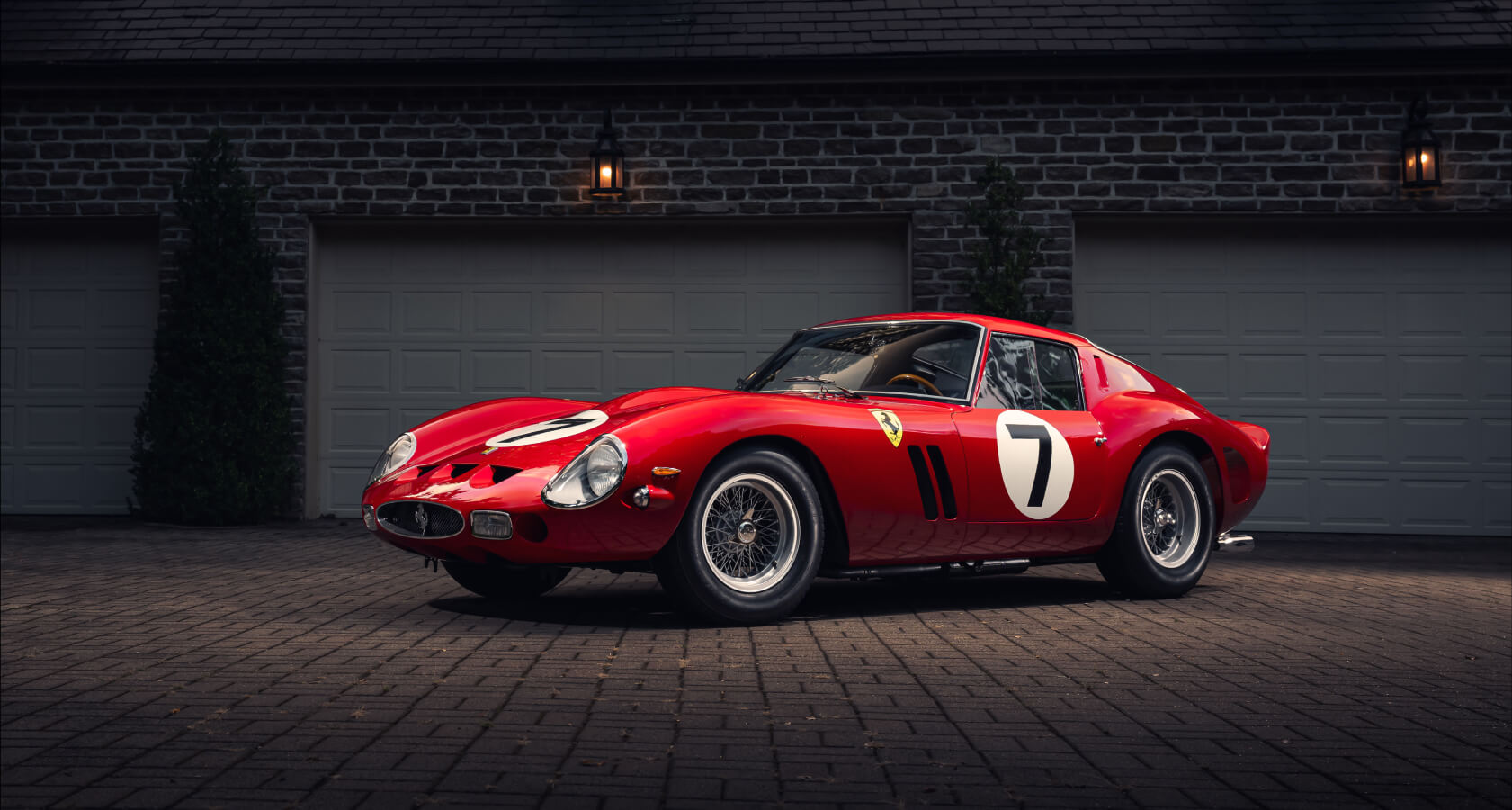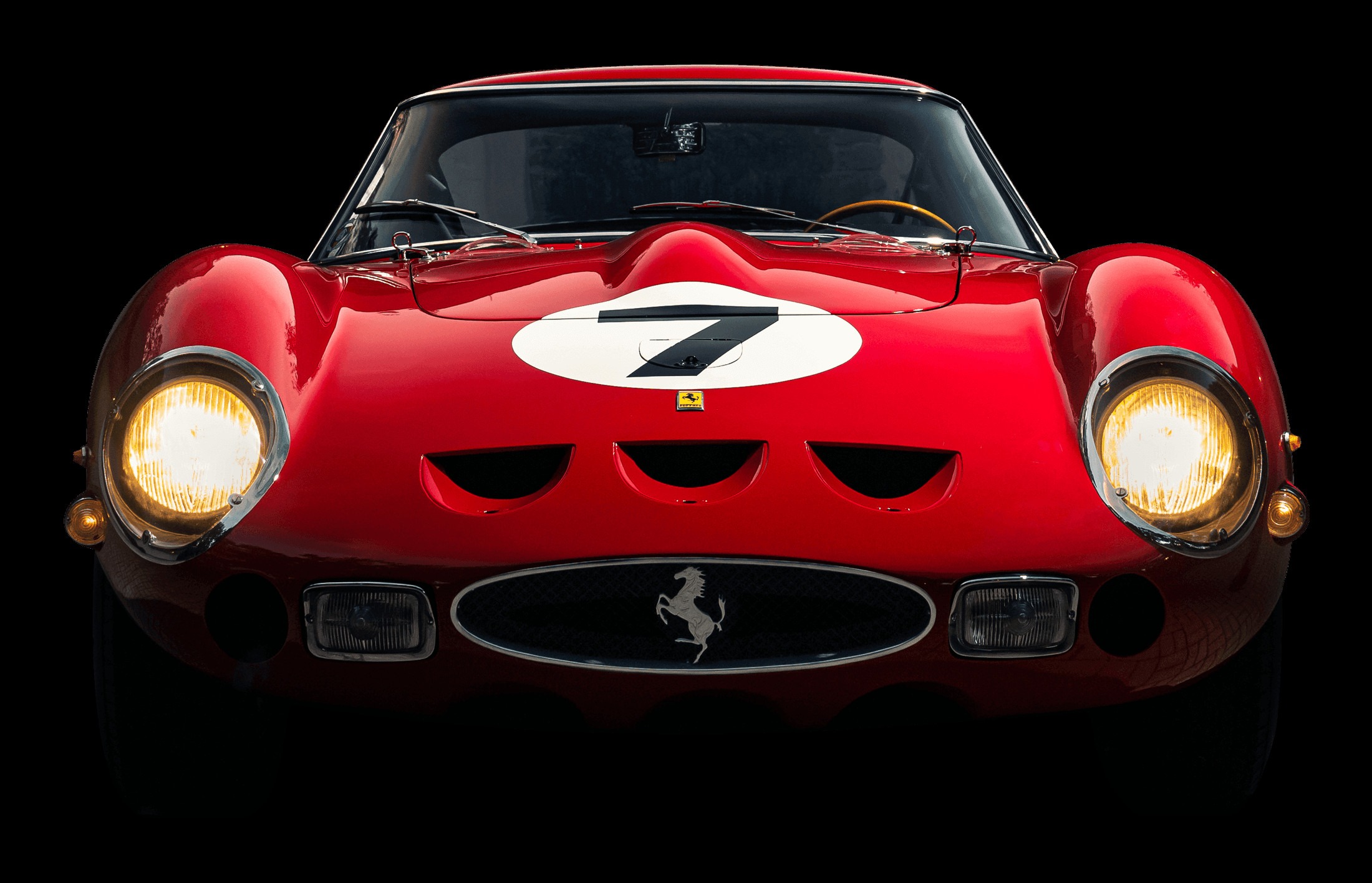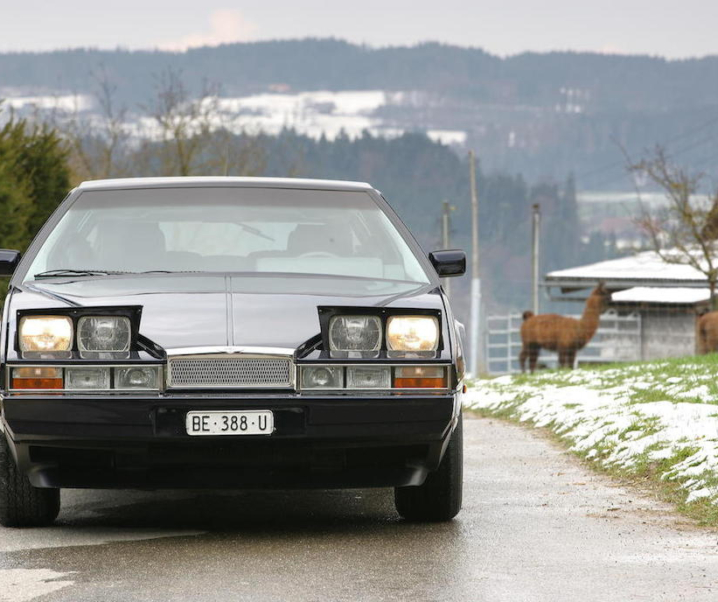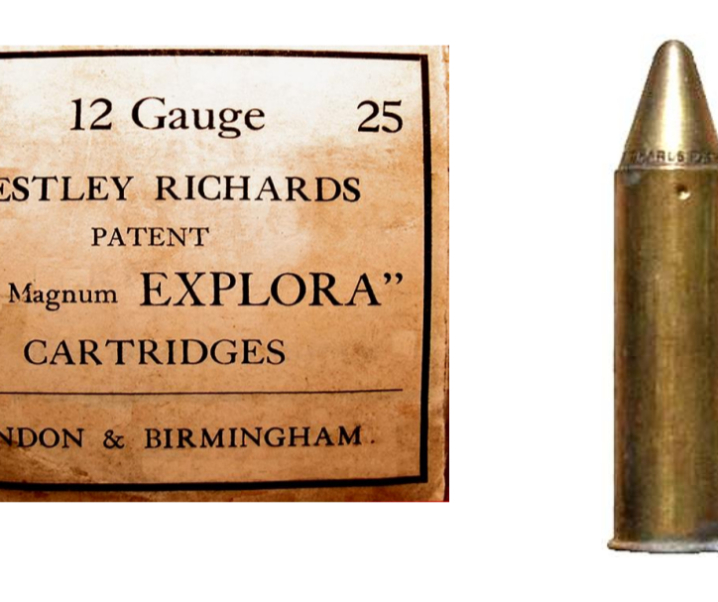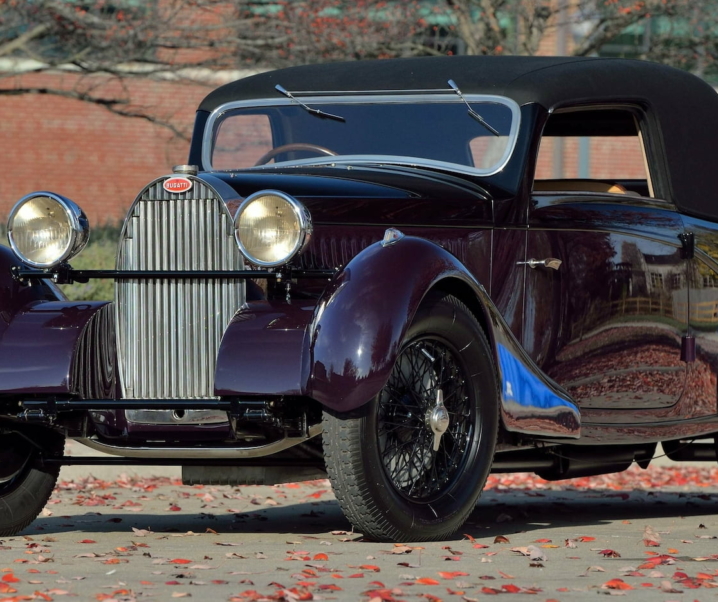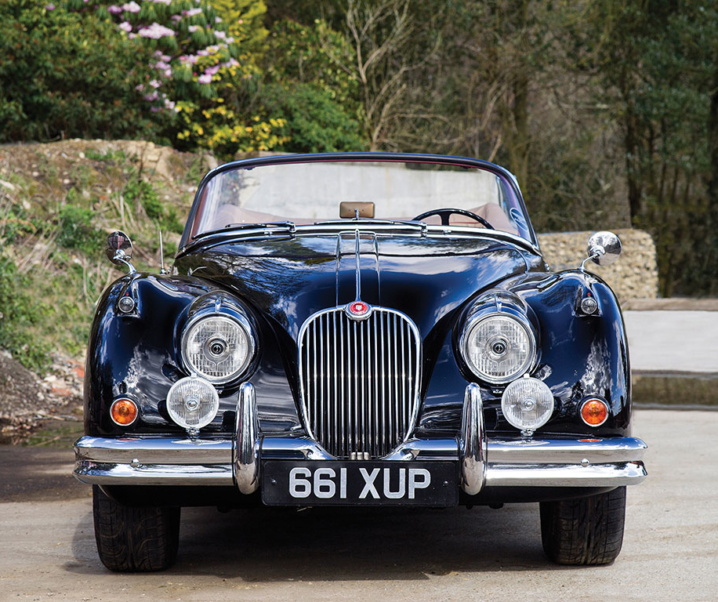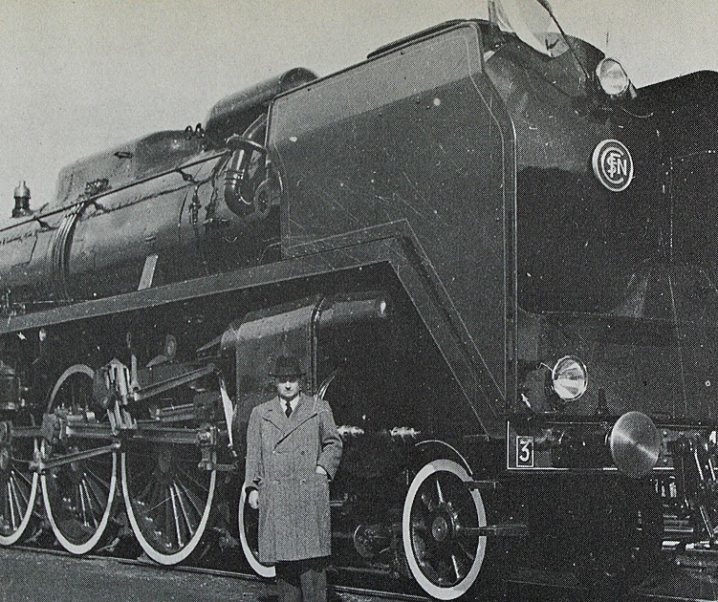The story of the Ferrari 330 LM began with the creation of the three litre Ferrari 250 GTO racing cars which have gone down in history as some of the most famous, and thus most desirable, of the many racing cars the mavens of Maranello have made.
The 330 LM chassis #3765 was unique in that it was a 250 GTO fitted from new with a 390 hp four litre V12 engine, that was raced by Scuderia Ferrari.
Fast Facts
- The Ferrari 330 LM chassis #3765 was unique in that it was the only 250 GTO fitted with a four litre 390hp V12 engine that was raced by Scuderia Ferrari.
- The 330 LM had a sibling, the 330 TRI LM, which differed from 250 GTO specifications and featured an independent rear suspension.
- The original Scuderia Ferrari 330 LM team racing car is coming up for sale by RM Sotheby’s on 13th November 2023 in New York.
The Ferrari 250 GTO
The Ferrari 250 GTO made its debut in 1962 at the annual Ferrari pre-season press conference.
The 250 GTO was the only front engine car shown at that press conference, and was originally designed by a team that was headed by Giotto Bizzarrini, who would later design the front-mid-engine Iso Grifo competition version. Bizzarrini left Ferrari before the 250 GTO design was complete and the work was given to Mauro Forghieri who collaborated with design house Carrozzeria Scaglietti to refine and complete the design.
The Ferrari 250 GTO (Gran Turismo Omologato – i.e. Grand Touring Homologated) was powered by a Tipo 168/62 Competition 2,953 cc SOHC dry-sump Colombo short-block V12 engine breathing via six Weber 38 DCN carburettors. The dry-sump enabled the engine to be mounted as low as possible and thus kept the centre of gravity of the car down low for optimum handling.
The engine had a compression ratio of 9.7:1 and produced 296 hp @ 7,500 rpm with torque of 217 lb/ft @ 5,500 rpm. This power and torque being delivered to the rear axle via a single plate clutch and five speed all synchromesh manual transmission.
The chassis of the 250 GTO was the Tipo 539/62 and it incorporated the use of smaller light tubing in strategic elements of its hand-welded oval tube frame to bring the weight of this racing car down as much as practicable while improving the chassis stiffness.
The car in fact finished up being 250lb lighter than the 250 GT SWB from which it was derived.
The suspension was independent with “A” arms at the front and a beam axle at the rear with Watts Linkage. Brakes were discs all around and steering was by worm and roller. The wire wheels were by Borrani.
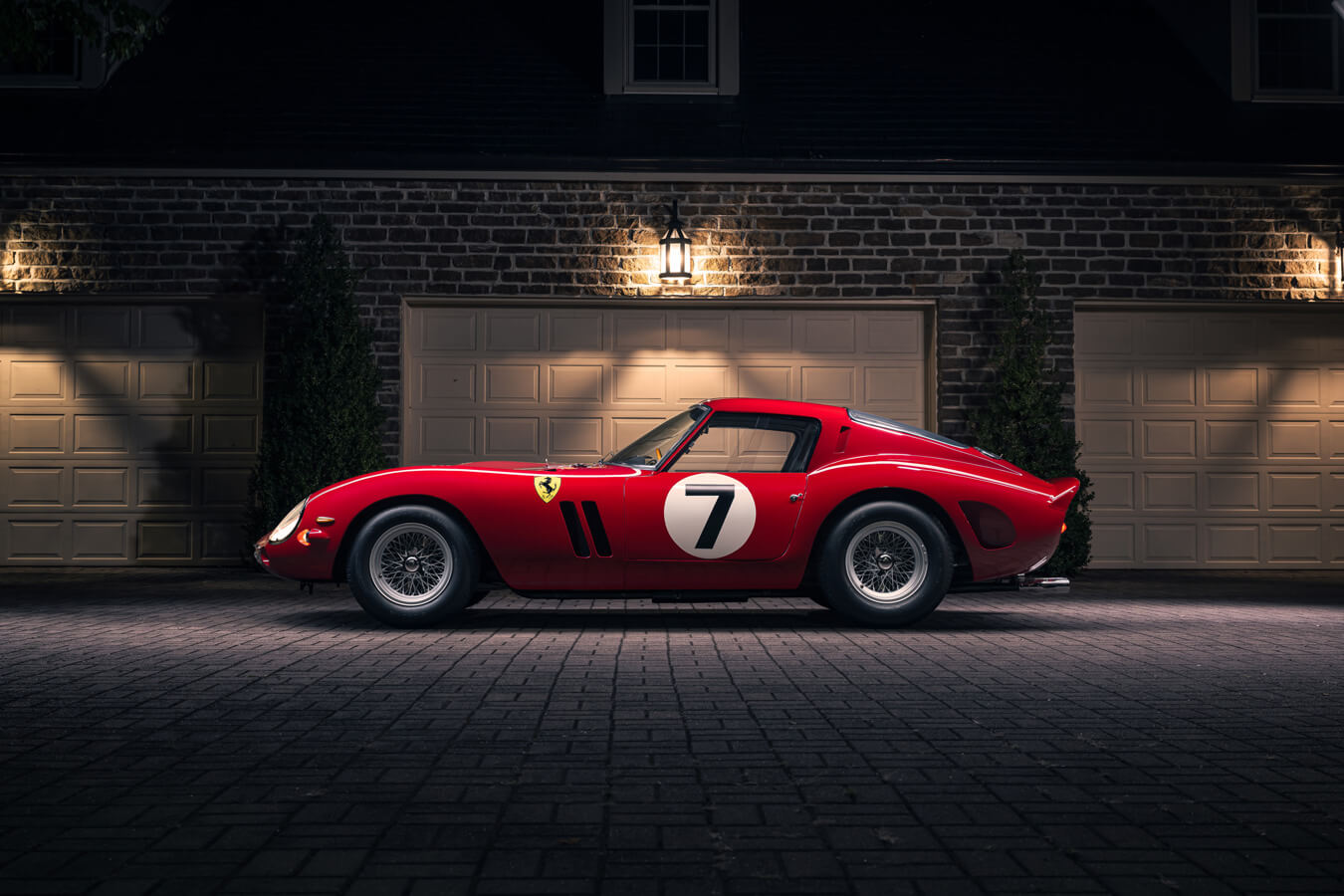
There were thirty-six of the 250 GTO cars made, 33 with the original Series I body and another three with the Series II bodywork.
The 250 GTO began to establish its competition credentials by achieving first in class and 2nd overall at the 1962 12 Hours of Sebring at the hands of Phil Hill and Olivier Gendebien in its debut year, 1962.
In the hands of private competition teams the 250 GTO became a legendary racing car.
The Ferrari 330 LM
1962 was to be a pivotal year for another reason. The organizers of the 24 Hours Le Mans, run each year at the Circuit de la Sarthe, decided that it would improve on their already superb motor race by creating a class for engines up to four litres capacity.
Other race organizers seem to have thought “What a good idea” and classes for four litre engines were also created for Sebring, the Targa Florio, and the Nürburgring 1000km.
The folks at Ferrari decided to take up the challenge but were faced with the question which existing car model would be the right one into which to drop a nice big four litre engine? And the answer was to use the 250 GTO.
Not only did Ferrari decide to build a limited number of 250 GTO’s fitted with four litre engines, but they decided to campaign one themselves as a factory team.
The new car was dubbed the Ferrari 330 LM and it was fitted with a four litre V12 SOHC Colombo based engine. Actual engine capacity was 3967.44cc for this dry-sump engine and the compression ratio was 8.8:1.

The car was initially fitted with a three carburettor engine, which was changed to a six carburettor engine breathing via six Weber 42 DCN carburettors, and sending its 390 hp @ 7,500 rpm to the rear axle via a multi-plate clutch and five speed all synchromesh manual gearbox.
Chassis #3765 was originally fitted with four litre three-carburetor engine number 42 SA in May 1962. She was the the ninth car built by date, and sequentially the 14th of 34 examples built with Tipo 1962 coachwork.
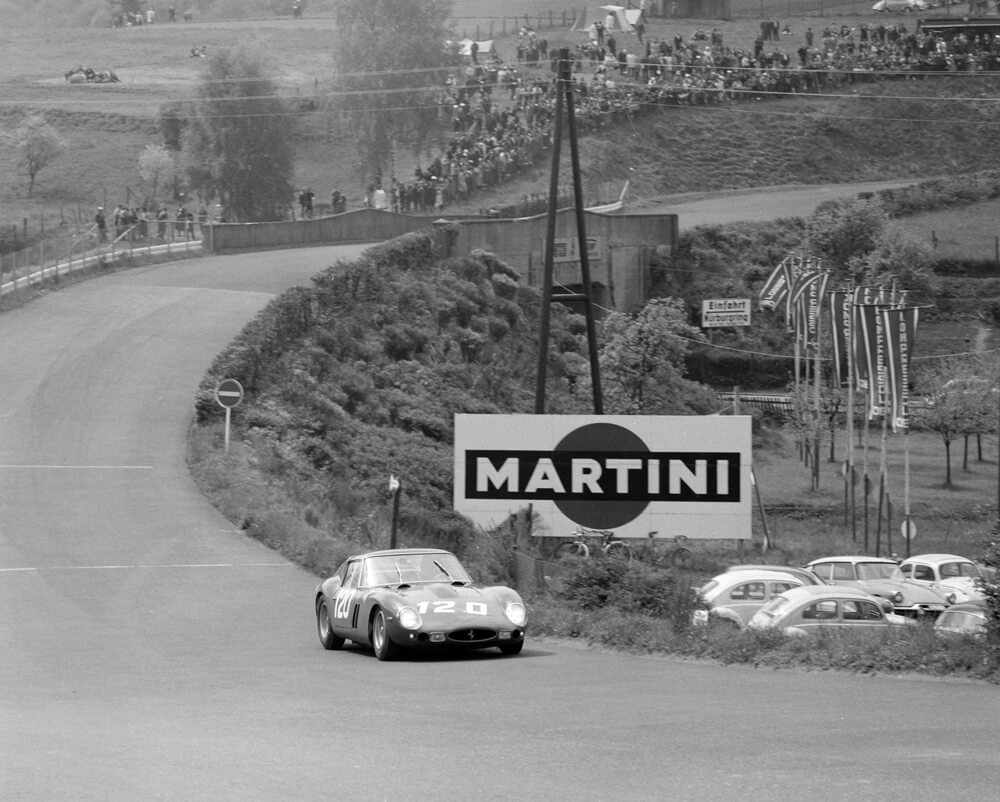
This car made its competition debut campaigned by Scuderia Ferrari wearing race number 120 and driven by Mike Parkes and Willy Mairesseat the Nürburgring 1000km on 27th May 1962. She delivered first in class and second overall, a most satisfying result that encouraged Ferrari to set their sights on the 24 Hours Le Mans.
The three carburettor engine number 42 SA was removed after the Nürburgring race and in its place was installed engine number 48 SA fitted with six Weber 42 DCN carburetors. This, in all likelihood required the reshaping of the hood bulge.
The car was also fitted with special driving lamps which were added to the sides of the fenders just underneath the tear-shaped markers, and the three cooling vents in the nose were opened (they had been closed for the Nürburgring race).
For the 1962 24 Hours Le Mans Scuderia Ferrari entered two front engine four litre cars: chassis #3765, a 330 LM, and a 330 TRI LM which was also derived from the 250 GTO but fitted with an independent rear suspension.
Ferrari also entered two Ferrari Dino Le Mans cars. In addition to that were four 250 GTO private entries.
#3765 was driven by Mike Parkes and Lorenzo Bandini and performed very well in practice setting the second fastest lap time of the day with Parkes behind the wheel, and securing the fourth place starting position.
Chevrolet had begun fielding teams at Le Mans beginning in 1960 and it was to be a duel between Mike Parkes and Aston Martin driver Phil Hill once they’d passed a Chevrolet Corvette that was to prove the undoing of #3765 in this race.
Both Parkes and Hill passed the Corvette flying down to Mulsanne Corner, and then Parkes tried to outdo Hill by leaving his braking until what he judged to be the last possible split second.
Unfortunately Parkes had left his braking just a tad too late, and at the speeds they were going there was no recovery for that mistake, he locked up all wheels and slid not so gracefully into the sand.
Happily Parkes was carrying a shovel in case he experienced an unplanned off-road excursion, and he proceeded to dig the 330 LM out of the sand and limped it to the pits to get the necessary repairs done to get back into the race.
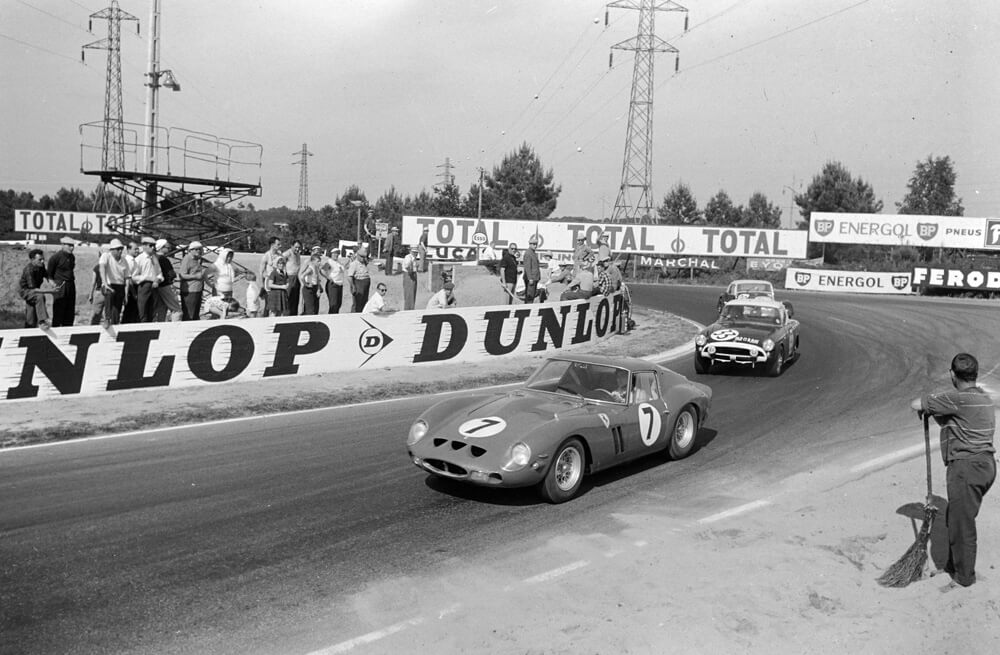
The pit crew were unable to fully rectify the damage done in the crash however and although Lorenzo Bandini took over as driver and soldiered on regaining ground from 54th place to 42nd place the 330 LM was overheating and that got progressively worse forcing the car out of the race in the seventh hour.
So unfortunately the sole Ferrari 330 LM was not able to secure a podium position, that honour went to its sister car, the 330 TRI LM.
Chassis No. 3765
After the disappointing result at Le Mans chassis #3765 was returned to the Ferrari factory and subjected to a thorough refurbishment to prepare it for sale.
In November 1962 the car was purchased by Pietro Ferraro who lived in Trieste. Mr. Ferraro wanted his new car remodeled to 250 GTO specifications and so, although this 330 LM had the longer engine bay to accommodate the 4 litre engine, that engine was removed and replaced with a 3 litre engine number 670/62E. This engine had been used in a development car chassis #0796 which had been a Dino that was used in the development of the Ferrari 250 P.
That 3 litre 128LM/63 engine was attached to a 250 GTO five speed all synchromesh gearbox and when complete the car was tested at the Modena Autodromo by none other than John Surtees.
In July 1964 Ferraro used the ex 330 LM now 250 GTO in the Trieste-Opicina hillclimb and managed fifth place. He then sold the car Ferdinando Latteri of Palermo, Sicily who purchased it to race it.
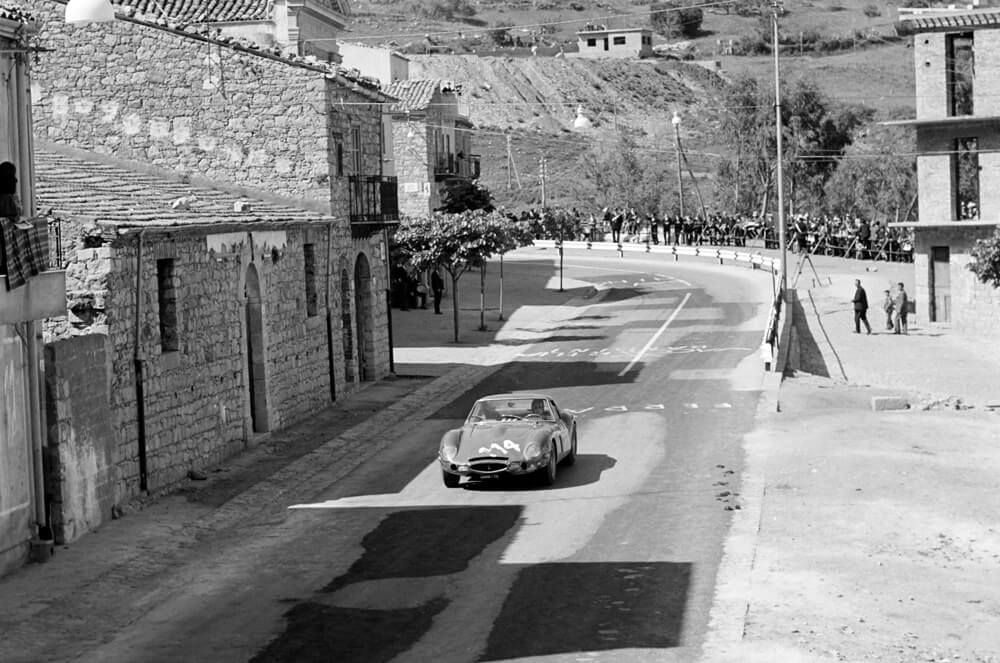
Latteri had his best successes in hillclimb competition and finished second in the 1965 Sicilian Hillclimb Championship.
Latteri traded the car back to Ferrari in 1967 and she was sold to Californian Mario Tosi who had the car refinished in an amber “giallo” paintwork.
Tosi sold #3765 the following year to Jack Reuter of St. Louis, Missouri, who began showing the car at Ferrari marque meetings and events including the FCA tour in November 1971.
In 1974 the car was sold again, this time to collector Fred Leydorf of Birmingham, Michigan who proceeded to exhibit the car at FCA and other events.
Then in 1985 #3765 was sold to her current owner who had the car thoroughly restored by Shelton Ferrari in Fort Lauderdale, Florida.
After that work the car has been exhibited on numerous occasions and won various awards.
This car is coming up for sale by RM Sotheby’s on 13th November 2023 at 1334 York Avenue. New York, NY 10021. 5pm for drinks, and then 5.30pm for the auction.
You can find the sale page with more details here.
Picture Credits: All pictures courtesy RM Sotheby’s.

Jon Branch is the founder and senior editor of Revivaler and has written a significant number of articles for various publications including official Buying Guides for eBay, classic car articles for Hagerty, magazine articles for both the Australian Shooters Journal and the Australian Shooter, and he’s a long time contributor to Silodrome.
Jon has done radio, television, magazine and newspaper interviews on various issues, and has traveled extensively, having lived in Britain, Australia, China and Hong Kong. His travels have taken him to Indonesia, Israel, Italy, Japan and a number of other countries. He has studied the Japanese sword arts and has a long history of involvement in the shooting sports, which has included authoring submissions to government on various firearms related issues and assisting in the design and establishment of shooting ranges.

